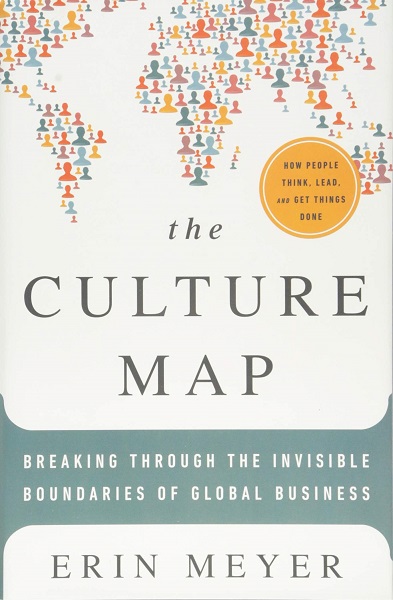Today I return to an old love besides Japan—the book review. I stumbled into that niche quite by accident when back in the oughts I was invited to write for Books in Canada. That invitation from then Associate Editor Carmine Starnino launched my freelance career writing reviews and short features along with work for private clients.
The buzz at the time was—and still is—to find your niche as a writer. The review was mine. Alas, just as I was getting into a lovely upward swing of regular assignments from editors including The Globe and Mail; the Internet exploded and everyone with a keyboard was invited (and eager) to contribute to sites like Goodreads and Amazon for free. As a result that niche dried up. The books sections of newspapers went the way of the dodo bird. Now what we get is a good deal of e-ink about what people like.
Once in a while, however, I talk about a book here. The Culture Map: Breaking Through the Invisible Boundaries of Global Business by INSEAD professor Erin Meyer is a book I wish I’d read long before traveling to or studying in Japan. Even though my regular travels to Japan since 1998 and broad reading from various sources gave me extensive knowledge about Japanese culture, greater insights such as those Meyer provides would have relieved some acute moments of distress as I struggled to comprehend the world I was trying to navigate.

The book is an insightful analysis of the ways people from a variety of cultures communicate, lead, follow their leaders, function as teams, make decisions, handle disagreements, perceive time, offer performance evaluations, and build trust.
It is highly useful for people who work or study internationally. Its insights (with illustrative cases as examples) are vital for understanding how bosses, professors, peers or subordinates in various cultures can be expected to behave and why. Once in the know, people can work together with others from diverse cultures more harmoniously and without wasting time suffering negative experiences before figuring out what’s going on.
Often individuals, whatever their cultural norms, believe that their skills and previous accomplishments will carry them through any challenges in a new culture. However, expectations for outsiders and how critical information may be delivered to them might be quite different from any they’ve previously known.
Awareness of the numerous disparate nuances allows individuals to navigate the shoals of manners and cultural norms with greater ease and less distress. I highly recommend The Culture Map to anyone wishing to work or study or live abroad.
For anyone without the time for 253 pages, this YouTube option might be a good alternative: https://www.insead.edu/.
